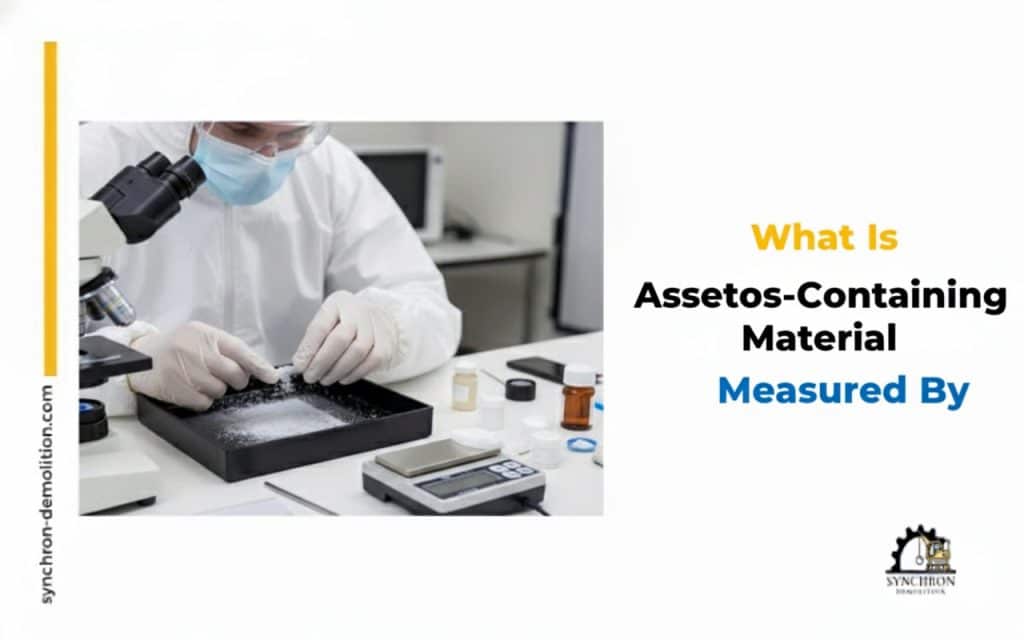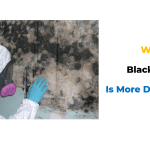Asbestos hides in building materials the way dust hides in sunlight. You only notice it when the light hits just right, and by then you want clarity, not guesswork. In Vancouver homes built before the early 1990s, that clarity often comes from measuring asbestos-containing material, known as ACM, and understanding when asbestos removal may be necessary. Knowing how ACM is measured makes renovations and removals safer and keeps homeowners on the right side of BC regulations.
Understanding What ACM Means
Asbestos-containing material refers to any construction material that holds asbestos fibres. Its presence doesn’t automatically spell danger. What matters is the amount of asbestos, the type of fibre, and whether the material can easily crumble. These factors come together to define ACM and determine how it must be handled under WorkSafeBC rules. That’s why measurement matters: it’s about knowing what you’re touching before you disturb it.
What “Measurement” Refers To in Asbestos Testing
People often imagine measurement as one number, but asbestos testing actually looks at several things. Labs check whether asbestos is present, what kind of fibre it is, and the percentage of asbestos by weight. Sometimes they measure airborne fibres instead, recorded as fibre concentration in the air. These details build a full picture of risk. Renovation dust, crumbling insulation, or flaky drywall compound each create different scenarios, and measurement helps classify them correctly.
Analytical Methods Used to Measure ACM
Laboratories use specialised microscopy techniques to determine what’s in your material.
Polarized Light Microscopy (PLM)
PLM is the standard tool for bulk material testing across BC. It identifies asbestos types and determines the percentage within materials like drywall compound, vinyl tiles, plaster, or flooring adhesives.
Transmission Electron Microscopy (TEM)
TEM provides higher magnification and is particularly useful for materials such as vermiculite or samples where fibres are extremely fine. Its sensitivity makes it essential when standard methods aren’t enough.
Phase Contrast Microscopy (PCM)
PCM isn’t used to test materials. Instead, it measures fibre concentration in the air. It’s the method used when checking if a space is safe to reoccupy after abatement.
How Labs Report Asbestos Measurements
Lab reports translate testing into practical numbers.
Percentage by Weight
For solid materials, asbestos is measured as a percentage by weight. In many regulations, anything at or above one percent asbestos is labelled ACM. Even lower percentages can be treated cautiously depending on the province and the type of work being performed.
Fibre Concentration (F/cc)
Air testing results come as fibres per cubic centimetre. This measurement matters during and after abatement, ensuring workers and homeowners aren’t exposed to airborne fibres.
Material Classification Based on Measurement
Measurements determine whether a material is considered ACM and whether it’s friable or non-friable. Friable materials break apart easily, raising the risk of airborne fibres. Non-friable materials still need respect, but their risk increases only when they’re cut, drilled, or broken.
Common Materials Where ACM Measurement Is Required
In Vancouver homes, ACM testing is common in:
- Drywall joint compound
- Vinyl floor tiles and sheet flooring
- Ceiling texture
- Pipe and duct insulation
- Vermiculite attic insulation
These materials age differently. Some crumble, others stay solid until disturbed. Testing each one helps prevent unnecessary exposure.
When a Homeowner Needs ACM Measurement
An asbestos test becomes necessary when planning a renovation, demolition, or even minor repairs in older properties. Anyone purchasing a pre-1990 home often requests testing for peace of mind. Damaged building materials also deserve attention, since breaking or flaking increases the risk of fibre release. In BC, WorkSafeBC expects testing before disturbing suspect materials during renovation work.
Costs and Turnaround for ACM Measurement
The cost of asbestos testing depends on the number of samples and the type of analysis. Bulk material tests usually cost per sample, and turnaround time ranges from same-day rush service to several business days. Air clearance tests, when required, involve separate sampling and lab fees.
Why Professional Testing Matters
Reliable testing prevents health risks, legal issues, and costly project delays. Certified labs and trained technicians know how to collect accurate samples, label them correctly, and interpret results within BC’s regulatory framework. Homeowners gain safer renovations, contractors gain compliance, and both avoid unnecessary liability.
Synchron Demolition provides asbestos testing and guidance in Vancouver, helping homeowners and contractors understand what they’re dealing with before renovation or demolition begins. Accurate information leads to better decisions.
Conclusion
Understanding how ACM is measured brings clarity to a subject that often feels intimidating. Between identifying the type of asbestos, determining its percentage, and analysing air quality, testing transforms uncertainty into a path forward. Whether you’re starting a renovation or checking the safety of an older home, proper measurement keeps projects lawful, safe, and predictable.




